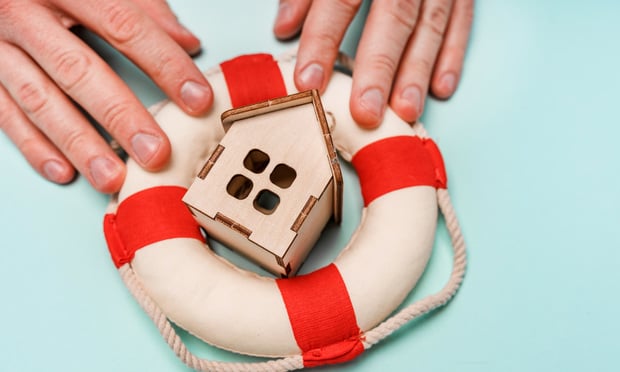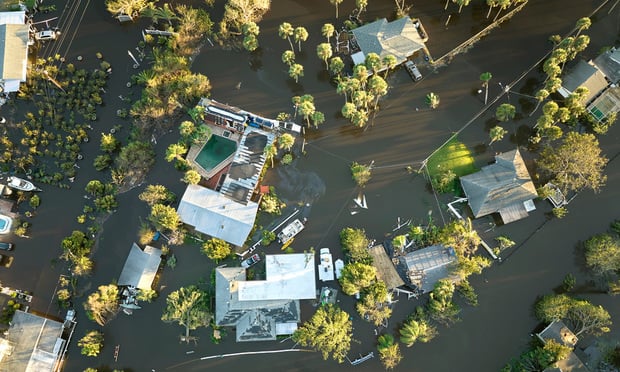Green construction represents a small but rapidly growing segment of the U.S. construction industry. Defined as construction that focuses on sustainability, green projects currently comprise less than 10 percent of all new construction. However, this number is three or four times what it was only a few years ago and is steadily on the rise.
Traditional building design and construction methods can be inefficient and wasteful. According to the U.S. Green Building Council (www.usgbc.org), construction produces 136 million tons of waste every year, consumes 65 percent of total electricity consumption, generates 30 percent of total greenhouse gas emissions, consumes 12 percent of potable water, and uses 40 percent (or 3 billion tons) of raw materials globally.
Sustainable construction is the diametric opposite of this approach. Thoughtfully designed, high-performance buildings are energy efficient, have lower operating costs, are better for the environment, and promote whole health for users and occupants with measurable results.
For agents and insurers specializing in the construction industry, green projects represent a growing opportunity, as well as some unique challenges, primarily involving meeting the high expectations of the green promise.
Following the LEED
Green elements have been part of the construction industry for awhile, but not as a specific practice. That changed in 2001, when the U.S. Green Building Council introduced its Leadership in Energy and Environmental Design (LEED) certification program.
Projects are awarded points based on a checklist of elements that can be incorporated into a building's design, including site development, storm water design, water-efficient landscaping, onsite renewable energy, construction waste management and innovative building design. Certification is granted after a construction project is completed and specialists measure indoor air quality and other variables for compliance.
LEED got immediate attention from the commercial construction sector, and over the last two or three years has begun to filter into the residential construction area as well.
There is also LEED certification for the operation and maintenance of existing buildings, commercial interiors, homes, schools and neighborhood development.
Green building comprised $10 billion of the commercial and residential construction market in 2005. This number is expected to increase to $60 billion by 2010, driven in part by green retrofitting and modifying the existing U.S. building stock–better from the environmental perspective than knocking down old buildings and putting the debris in a landfill. Although currently only 10 percent of LEED certification is for existing buildings, this number is expected to grow.
The green trend is probably best reflected in the increasing number of public entities requiring green construction, whether new or refitted. More cities, towns, states and school systems are requiring LEED-certified building projects. This is increasing dramatically, pulling along the need for more capacity for doing green building.
Today, LEED-certified projects are found in 55 cities, 11 counties, eight towns, 22 states, 33 schools and 11 federal agencies. One of the higher-profile projects is the $8 billion city center now under construction in Las Vegas, which is currently seeking LEED certification.
While so far only around 1,000 construction projects have received LEED certification, a whopping 10,000 are currently in the pipeline–testimony to the increasing popularity of green construction.
How will green projects perform?
Green projects are expected to perform better than traditionally constructed buildings. Expectations are that a LEED-certified project will not only reduce the carbon footprint, but provide tangible benefits in the form of increased energy efficiency, cleaner and safer construction sites, and better air quality due to the reduction of indoor pollutants.
But because most LEED-certified buildings have only come on in the last year or two, it's hard to tell how they will actually perform. If they don't live up to these enhanced building performance expectations, contractors, architects, engineers and building owners may face additional risk management challenges.
Depending on the level of LEED certification, buildings are modeled for energy efficiency, which is done on the computer–a technique that is not always accurate. If a building's energy consumption is supposed to be 65 percent more efficient and ends up being only 45 percent more efficient, who is responsible?
Contractors and architects working on green projects also are required to verify specifics such as whether the materials they're using were manufactured within 500 miles of the project–another potential area of risk. And as interest grows in green construction, especially in states like California, contractors could face difficulties finding enough workers and supervisors knowledgeable enough about sustainable building–such as specifics on LEED rating and material purchasing–to meet the increased demand.
Green projects can also be more expensive, depending on how far a contractor wants to go with LEED certification. These are categorized in four levels: LEED certified (26 to 32 points), Silver (33 to 38 points), Gold (39 to 51 points) and Platinum (52 to 69 points). Entry-level certification typically will not increase a project's cost. However, projects seeking Gold certification could see a 2 to 3 percent increase and Platinum as much as 10 percent more–although the projects are expected to, among other benefits, be able to offset much of the additional cost through savings in energy costs over time.
Meeting the coverage demand
Although insurance coverage for green projects is typically no different from traditional construction products–they still require workers' compensation, general liability, professional liability and surety–these unique “green risks” can make an agent's job more challenging.
Coverage differences between traditional and green might lie in obtaining insurance for more specific risks. For example, if a building project sustained a loss during construction such as a fire or other physical damage, material replacement would have to be green, which could increase costs. It could also cost the contractor more to have a building recertified or recommissioned.
Insurers, recognizing an opportunity when they see it, are beginning to build coverage for potential exposure areas like performance and operational characteristics into some lines of insurance. Current professional liability coverage excludes warranties and guarantees, so insurance products are starting to evolve to take these exposures into consideration.
As part of Zurich's efforts to meet these needs, we are working with our general contractor and large design firm clients to determine how green exposures differ from traditional. In February, we organized a peer group conference with Aon and attorneys from Peckar & Abramson LLC, in which contractor customers from the U.S. and Canada participated in a summit to discuss claims, products and best practices, including a panel around green building risk.
We're also taking a closer look at our own carbon footprint and taking steps such as cutting back on air travel and using offsets available through entities such as the Carbon Fund (www.carbonfund.org), an organization which funds projects like wind farms and hydroplants to offset greenhouse gases. Carbon Fund supports renewable energy, energy efficiency and reforestation. Business that donate can select their preferred carbon offset type.
This will become more important as Congress continues to look at cap-and-trade programs that will limit carbon dioxide emission allowances for U.S. businesses.
The growth of green in the U.S. and around the world presents a great opportunity for agents and insurers to find new ways to serve their construction clients. But for now, all of us are still in the learning stage. Insurers, agents and construction customers need to work together to track trends and find the best ways to meet the challenges that lie ahead.
Sidebar
The U.S. Green Building Council defines sustainability as “meeting the needs of the present generation without compromising the ability of future generations to meet their own needs.” With that in mind, green construction focuses on elements including:
o Picking an appropriate site. Whether it's residential or commercial, site selection should include proximity to public transportation and connection to the community, instead of a subdivision built in the middle of a farm field.
o Efficient use of water. Green thinking includes capturing rainwater to irrigate, landscaping with plants that don't require a lot of water and eliminating big stretches of high-maintenance lawn.
o Energy use in the building. Whether it's a traditional form of energy like gas or electric, or it's natural energy like solar collection or windmills, green energy focuses on measurable efficiency.
o Materials in use. Green construction encourages recycled and renewable materials, manufactured or made close to the construction site to minimize shipping, as well as careful management of construction site waste.
o Indoor air quality. To maintain measurable air quality, green construction emphasizes using nontoxic construction materials, protecting ductwork against chemicals and enforcing a no-smoking policy on the construction site.
o Innovative designs. LEED encourages thinking outside the box in designing buildings that optimize efficiency. Jacobus (Jaap) P. Vrolijk serves as vice president within North America Commercial's Construction business unit. He leads the underwriting, marketing and development initiatives of Zurich's Subcontractor Default and Professional Liability insurance programs.
Want to continue reading?
Become a Free PropertyCasualty360 Digital Reader
Your access to unlimited PropertyCasualty360 content isn’t changing.
Once you are an ALM digital member, you’ll receive:
- Breaking insurance news and analysis, on-site and via our newsletters and custom alerts
- Weekly Insurance Speak podcast featuring exclusive interviews with industry leaders
- Educational webcasts, white papers, and ebooks from industry thought leaders
- Critical converage of the employee benefits and financial advisory markets on our other ALM sites, BenefitsPRO and ThinkAdvisor
Already have an account? Sign In Now
© 2024 ALM Global, LLC, All Rights Reserved. Request academic re-use from www.copyright.com. All other uses, submit a request to [email protected]. For more information visit Asset & Logo Licensing.








